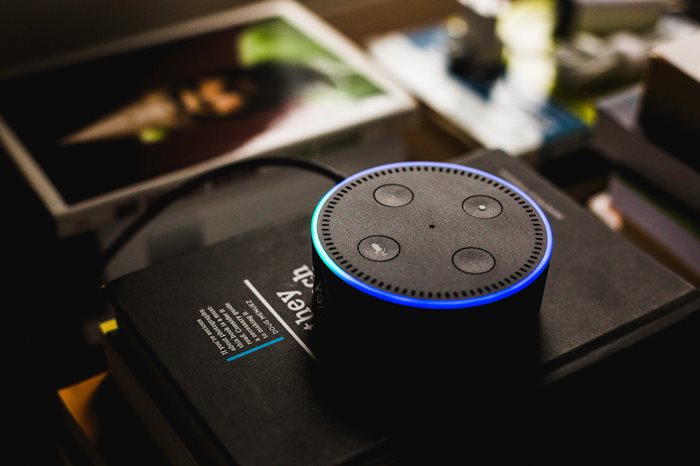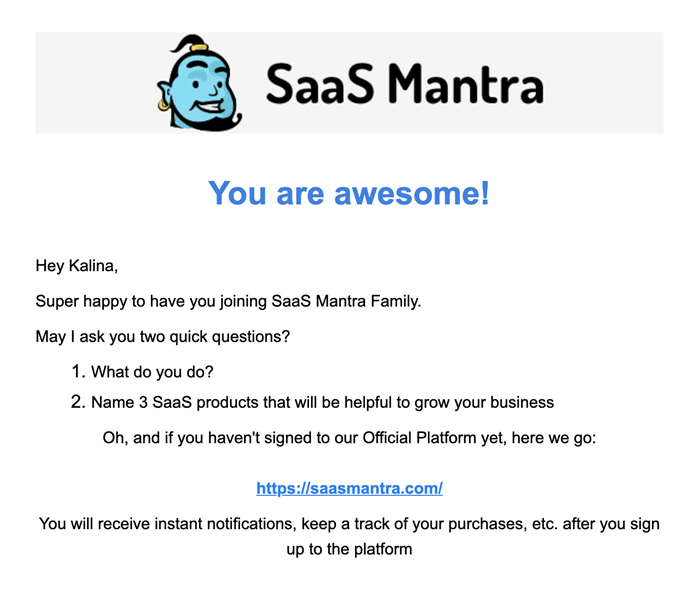Conversational Marketing Explained: The Ultimate Guide
Wondering how conversational marketing works and what’s in it for your business? You’re in the right place!

Human contact is a two-way phenomenon by nature – it’s always been all about conversations.
Marketing professionals, however, haven’t always followed that rule. Throughout the 20th century, the message "buy our product!" was sent out to the public. And that was it – no response expected, no contact details provided.
Two decades into the 21st century, the customers expect something entirely different. They don’t just expect to find the solution to a problem. They need someone to answer their questions, dispel any doubts, listen to their feedback and develop a long-lasting relationship.
And this is where conversational marketing comes in. The monologue turns into a genuine, one-on-one dialogue. The customer becomes an equal participant in the discussion.
Wondering how conversational marketing works and what’s in it for your business? You’re in the right place!
With this article, you’re going to learn:
- What is the definition of conversational marketing?
- What are the main areas in this field?
- What are the current conversational marketing trends?
- Which tools are used by conversational marketers?
Ready to make your communication more conversational? Let’s dive right in!
What is conversational marketing?
A relatively new term (coined by Drift around 2015), conversational marketing is focused on real-time conversations. What’s more, Drift’s definition stresses out that this approach is used to move the customers through the marketing and sales funnels as quickly as possible. In other words, conversational marketing is used to boost the sales process through conversations and building authentic relationships.
Real-time is the keyword here. The users don’t need to fill forms or send emails and wait hours (or even days) for the response. Instead, the communication happens on the go. What’s more, customers should be able to pick up where they left off. For example, if they begin a conversation on their way to the office, they might want to finish it on the way back home. If your conversational marketing channels are working well, they will have no trouble getting what they want.
Although the concept may seem entirely fresh, it’s kind of like getting back to the roots. The first sales happened face-to-face, with people talking directly to each other. Then came the era of door-to-door salesmen, where the main point was to see the potential client in person. Later on, the sales and marketing processes became impersonal and rather cold. Now, we’re on our way to make marketing personalised again.
Main areas of conversational marketing
Chatbots and Messenger marketing
When the topic of conversational marketing comes up, most people think about chatbots first. According to a report published by Salesforce, almost 60% of customers claim that new technologies like chatbots have changed their expectations of companies.
A chatbot is a piece of software which mimics human language and conversations. The idea behind it is to make the user feel like they’re talking to a human being.
Chatbots can be implemented in many different ways. You may use a voice assistant like Alexa or Google Assistant (more on that below), embed a bot on your website or talk to the customers through a channel they’re already using – such as Messenger.
The number of Messenger chatbots is growing rapidly. Back in 2016, just three months after the launch of Facebook bots, there were 11,000 chatbots on Messenger. In April 2017, the number of Messenger chatbots hit 100,000. As of 2018, the number has tripled. Currently, there are more than 300,000 chatbots on Messenger and new ones spring up like mushrooms.
Why is this particular conversational marketing channel rising in popularity? The main reasons for that include:
- High open rates and click-through rates – As the organic Facebook reach is declining, marketers are looking for new ways to reach their customers effectively. Messenger marketing is one of the most promising tracks to achieve this. Open rates for messenger bots average around 80%, while the click-through rates range between 15 and 60%. A digital marketing guru Neil Patel shared his own example of a Messenger chatbot campaign with a 88% open rate and a 56% click-through rate. Impressive, right?
- Short customer journeys – When it comes to email marketing, there is a lot of hassle involved. The user needs to provide their email address, open the inbox, scroll through dozens of unread messages and go through different steps to interact with your message. Messenger is much faster and more immediate – your campaign will feel like receiving a text from a friend. The customer journey becomes much shorter, too.
- No technical knowledge needed – With conversational marketing platforms like Chatbotize, you can build your very own Messenger chatbot in minutes. Literally, minutes – you don’t need to know how to code. Instead, you can use ready-to-implement plugins and templates.
- The power of AI – Forget about creepy chatbots and irrelevant responses. Thanks to technologies like natural language processing, chatbots are getting better at understanding human language and coming up with natural replies. Another thing is machine learning: the longer a chatbot works, the smarter it is. Based on the previous conversations, it learns how to match the response to the query to sound more human.
Live chats
Contrary to chatbots, live chats involve contact with a real person, usually a customer service team member.
Did you know that 79% of customers prefer to use live chats, as this is the way to get instant responses? Other reasons for choosing live chats over traditional customer service include the ability to multitask and higher quality of the information received. What’s more, 22% of customers claim that they just don’t like to talk on the phone. For them, the ability to use a chat instead is a dream come true.
Live chats are obviously a huge time-saver, but there’s much more to them – they can help with boosting your sales as well. According to Econsultancy, 83% of consumers need some kind of support to complete a purchase. This means that implementing a live chat on your e-commerce website is very likely to increase your conversion rates.
Voice marketing
Voice user interfaces have exploded in popularity in the past few years. Voice assistants like Siri, Alexa, Google Assistant or Microsoft Cortana are becoming a more and more important part of our lives. Although there’s still room for improvement, the conversations we have with them feel quite natural, very much like you’re talking to a real person.
Sounds good, but what’s in it for marketing?
Quite a lot, actually. Currently, 62% of US smart speaker owners are using their voice interfaces to make a purchase. Big companies, like Starbucks and Kayak, are well aware of that trend. With voice-based chatbots and applications, they allow the customers to order a coffee or even book a flight. One of the most prominent examples of voice marketing done right is Domino’s. This pizza chain uses an AI-powered voice assistant to handle incoming phone orders, as well as a pizza ordering skill for Amazon Alexa. The results are quite impressive – 20% of their “one-click orders” now go through Alexa. So simple and so convenient, right?
The future of voice marketing looks bright, too. According to Voicebot.ai, one in three American marketers is expected to have a voice app by 2020.

Conversational marketing trends
Conversational email marketing
Does the rise of chatbots mean that email marketing is dead?
Not at all! It means that email marketers can get inspired with conversational marketing techniques.
Conversational email marketing is focused on building relationships in the first place. It’s all about a change of perspective – sales happen as a result of a genuine conversation. The point is to drop sales jargon and write just like you talk instead. To sum up, conversational email marketing strives to make communication more human. Here’s an example of a casual and friendly email from SaaS Mantra:
 Conversational FAQs
Conversational FAQs
Conversational FAQs are another way of using a chatbot to improve customer experience. A Frequently Asked Questions page may have all the necessary information, but what’s the point if the visitors can’t find what they’re looking for?
Here’s where chatbots come to the rescue. Asking a question in a chat feels more natural and (you guessed it) conversational than scrolling through many pages to finally find the answer. Even if the chatbot can’t help with the issue, it may always redirect the visitor to a customer service agent.
Key takeaways for your conversational marketing efforts
As you can see, conversational marketing offers plenty of methods to reach your customers effectively. It’s a win-win solution for both sides: the customers are happier and the business is growing their sales quicker. If you haven’t implemented any conversational marketing methods in your company yet, we hope this article will be a source of inspiration for you!